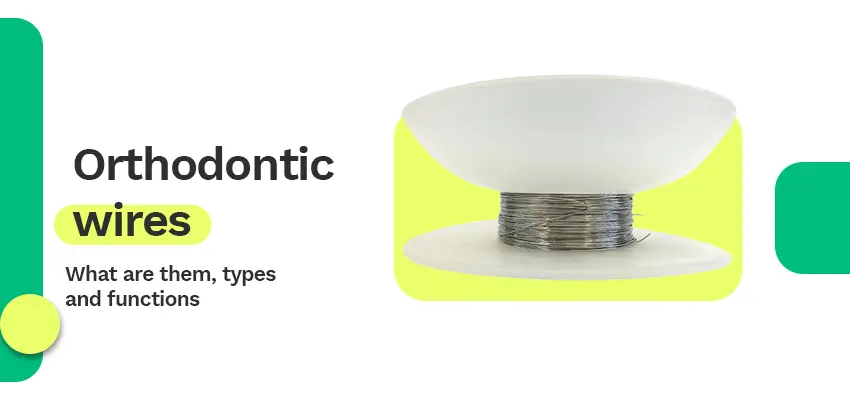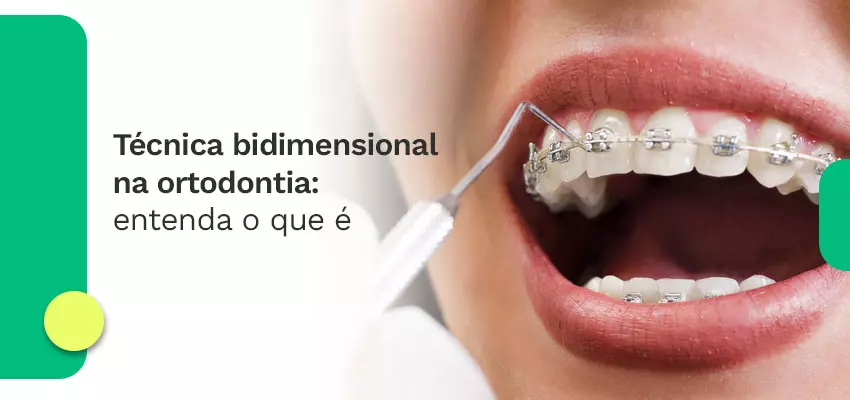Orthodontic wires: What are them, types and function


Every successful orthodontist knows that the outcomes of a good orthodontic treatment are beyond aesthetic results and deliver functional improvements to the patient, throughout the normalization of occlusion and dental alignment.
And to achieve the expected results, each clinical case will require specific mechanics provided by different orthodontic accessories, whether brackets, buttons, bands, elastics, tubes, and of course: orthodontic wires.
Speaking of orthodontic wires, do you know their function, differences between their gauges, and the sequence of changes? This content has been prepared exclusively to clarify frequent doubts about orthodontic wires!
What are orthodontic wires?
Orthodontic wires are made of various materials with different shapes and sizes; however, the different types of orthodontic wires have in common the goal of exerting force on the tooth and, consequently, moving it.
This happens because before the use of orthodontic wires, brackets are bonded, an important step in the assembly of fixed orthodontic appliances, as they are glued to the surface of the tooth to receive the orthodontic wire and allowing it to be fixed in the dental arch, with the aid of orthodontic ligatures (the famous rubber bands).
Types of orthodontic wires
If you aspire to be a successful orthodontist, knowing the characteristics of different types of orthodontic wires is crucial so you can make the appropriate selection and achieve successful results in your treatments.
After all, different models mean that each type of wire is indicated according to the orthodontist’s objective at each point in the treatment.
That said, let’s explore the main types of orthodontic wires and their characteristics and functions.
Nickel-titanium (NiTi) orthodontic wire
Nickel-titanium orthodontic wire, also known as NiTi, is characterized by its small diameter and high elasticity. Nowadays, it is a well-known wire and widely used in orthodontic treatments with fixed appliances, especially because it is most suitable for the beginning of treatment.
This is because it is made regarding size and elasticity assist in the initial stages of orthodontic appliances, bringing benefits to patient adaptation, as at this stage there are many teeth to be moved and with NiTi wire, this process can be done gradually, comfortably, without excessive force, and consequently, less pain to the treatment.
NiTi orthodontic wires can be superelastic, heat-activated, and copper-added.
- Superelastic NiTi Archwires: They have higher elastic limit, work well on rotated and crowded teeth, behave conventionally, promoting slow movements, and upon deactivation, the wire returns to its original state.
- Heat-activated NiTi Archwires: are superelastic wires that are influenced by temperature changes in the activation cycle.
- Copper-added: allow for more pronounced control of dental movement.
Stainless steel wire
These are generally used in the final phase of alignment because, unlike NiTi wires, stainless steel wires have a better action not in dental movement but in maintaining the movement already achieved, thus preventing the teeth from returning to their initial position.
And to fulfill this function, stainless steel orthodontic archwires are less elastic and more resistant.
Beta-titanium wire
Some wires are used in more specific cases, such as beta-titanium or TMA wires. In other words, not every treatment will involve their use, but when their use is necessary, it usually occurs at the beginning of treatment.
This type of wire generates greater friction with the brackets and its function is more directed towards closing spaces between teeth, correcting torque, and the need for the use of springs to upright molars.
In addition to all this, orthodontic wires can have various shapes (square, round, or rectangular) and different gauges (from 0.010 to 0.022). Initially, the more rounded, light, thinner, and flexible types are used — stiffness and thickness increase over time:
- Round: range from .010”/.012”/.013”/.014”/.016”/.018”/.020”;
- Rectangular: do not require elasticity, but rather formability for bends, friction, torque and angulation readings. They vary from .016”x.022”/.017”x.025”/.018”x.025”/.019”x.025/.021”x.025”;
- Square: used for segmented mechanics. They vary from .016”x.016”/.019”x.019”.
Orthodontic wire sequence
Now that you are familiar with the mechanical characteristics of each orthodontic wire, it is important to emphasize that your patient also needs to understand the importance of wire changes throughout the treatment.
After all, many patients believe that during maintenance appointments, only ligature changes are performed, when in fact the most important aspect is the evaluation and replacement of the wires present in the arches, for the desired dental movement.
Therefore, discussing the sequence of orthodontic wire changes is crucial, as when this sequence is performed appropriately according to the case being treated, the magic of the smile happens!
The four phases
The sequence of orthodontic wire changes can be divided into four phases: initial, intermediate, working, and finishing.
The thickness of the wire used will depend on which phase the treatment is in; for example, thinner and more elastic wires are used during the initial phase of treatment.
And following the same logic, thicker and more resistant wires are usually used during the working and finishing phases, that is, when the goal is to maintain the teeth in place.
And during the intermediate phase, wire changes are made, usually gradually increasing their thickness and sometimes using other accessories for more specific movements.
Conclusion
We hope this content has contributed to your knowledge of corrective orthodontics! If you liked it, share it with your friends who are interested in this specialty.
Stay tuned, more is coming soon!



